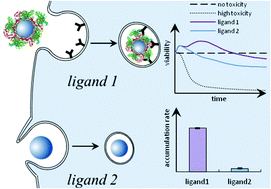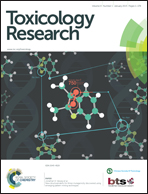Label-free monitoring of the nanoparticle surface modification effects on cellular uptake, trafficking and toxicity†
Abstract
Changing the surface functionality of nanoparticles (NP) through the addition of organic ligands and/or biomolecules is a common approach to reduce their potential toxicity. However, understanding how the surface modifications change NP's mechanism of action and behaviour in the presence of biological matrix is a complex challenge. It is often exacerbated by necessary sample pre-processing, which may alter NP characteristics limiting provided information, yet is required by majority of available physicochemical characterisation techniques. In this study we have adopted label-free kinetic measurements of NP size, charge and toxicity performed in biological matrix in situ to demonstrate how careful engineering of the NP surface dramatically changes their toxicity profiles, due to the rate the particles are taken up by cells. We also show how NP capping with proteins alters their cellular uptake pathway as well as intracellular trafficking and that endosomes acidification is an important cell defence mechanism. The results presented in this study, supported by other commonly used techniques, highlights a synergy between NP surface chemistry and their bioactivity, which could be used to influence development of safer nano-enabled products.


 Please wait while we load your content...
Please wait while we load your content...